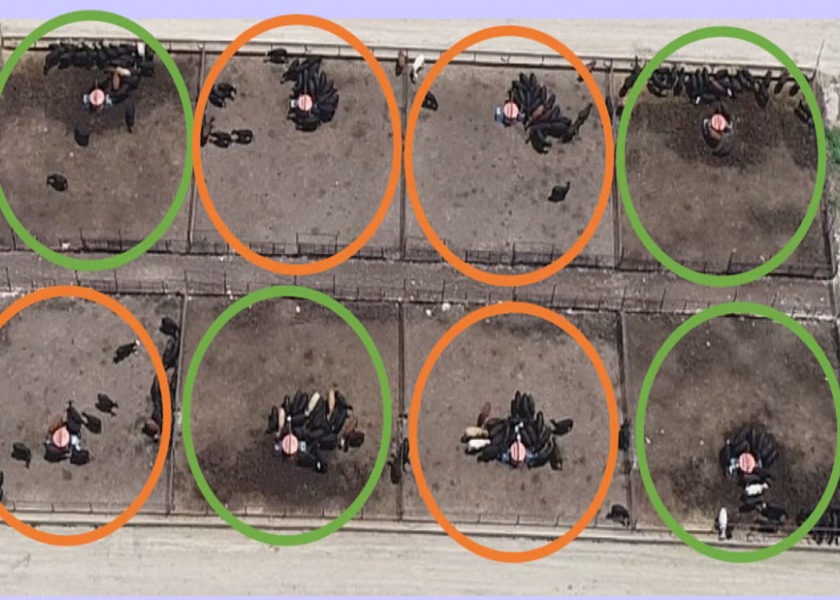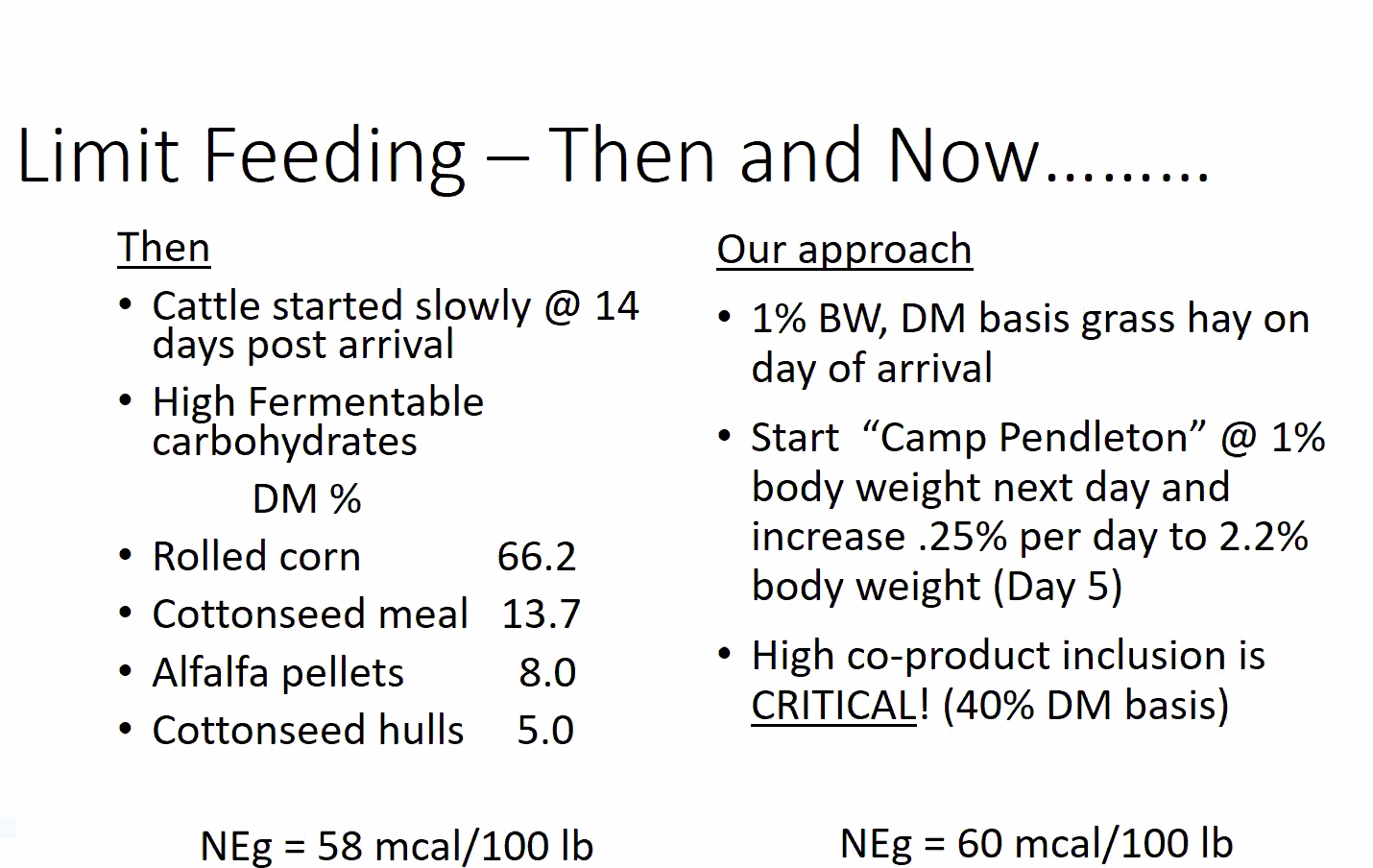Reduced Forages, High Feed Costs Make Limit Feeding A Good Option this Fall

Cattlemen struggling with high feed costs or reduced forage this fall because of drought conditions, might want to consider using a limit feeding program.
“This is one of the more cost-effective and efficient but management-intensive growing programs in using high-concentrate diets,” says Paul Beck, Oklahoma State University (OSU) Extension specialist for beef nutrition and the Denis and Marta White Endowed Chair of the Department of Animal and Food Sciences.
The basic principle of limit feeding is to feed corn (or some other concentrate energy source) and a supplement in just enough quantity to meet the animal’s requirement for maintenance or a targeted level of weight gain, according to David Lalman, OSU Extension beef specialist.
Generally, a very limited amount of roughage will be fed, or enough to keep the animal’s digestive system healthy, Lalman says. “The program is referred to as limit feeding because the diet is much more nutrient dense compared to hay or dry grass, and the amount consumed must be limited,” he says in an OSU fact sheet available here: https://bit.ly/2Z4T9xZ. “Otherwise, there is no benefit in terms of feed cost savings and the animals get too fleshy.”
Feedstuffs Playbook Gets Refined
While the concept of limit feeding has been around for at least 40 years, Kansas State University (K-State) ruminant nutritionist Dale Blasi has refined the practice in use at the university’s beef stocker unit for the past six years.
Blasi addressed the topic of limit feeding on Thursday during the Oklahoma State University (OSU) Rancher’s weekly series of topics.
“What makes this work, in my opinion, is that we utilize 40% of the diet as a co-product,” he says. “And we're utilizing highly digestible fiber, as opposed to starch, which we’re getting away from.”
Blasi says K-State beef specialists have evaluated a number of feedstuffs in their research and now use only four ingredients in their limit feeding program – prairie hay, corn, sweet bran and a supplement.
“It's important for me to tell you, we have actually taken alfalfa out and are now using 13% prairie hay, protein coming from either the wet cake, wet distillers or the wet corn gluten feed,” he says. “We believe our proteins are at 15% to 16% as they stand today with the exclusion of the alfalfa.”
Over the years, Blasi says limit feeding has delivered a 27% to 35% improvement in feed efficiency for the K-State beef stocker program.
Lalman says grain sorghum (milo), wheat, soybean hulls, wheat middlings, and corn gluten feed are also good candidates to be incorporated into limit feeding programs. However, he says to be aware of the nutritional characteristics of each of these feeds and adjust the ration accordingly. Very few by-product feeds can be fed as a single ingredient in complete cattle rations.
Pros and Cons of Limit Feeding
The positives to limit feeding are producers can decrease feed costs, waste and waste removal, use less labor and less equipment. The practice also allows producers increased flexibility in commodity purchases and trading.
The K-State team has also seen an uptick in their ability to quickly identify calves that are sick or languishing, which has reduced morbidity and treatment costs.
“It just stands to reason that if those calves are trained to know that they need to come up and eat when they need to, and there are calves holding back at the back of the pen, there's something going on there,” Blasi says. “So I think the program greatly facilitates improved health detection.”
Potential down sides to limit feeding are producers need to invest more intensive management to feed high-concentrate diets than is required to feed roughages. Facilities must also be set up to accommodate the practice.
Steps to Program Implementation
K-State uses what Blasi describes as a “Camp Pendleton” approach to feeding – a regimented, time-sensitive and controlled feeding strategy as opposed to a buffet or ad-lib approach to feeding.
After arrival, on day 1, calves receive about 1% of their body weight in grass hay. On day 2, Blasi starts the Camp Pendleton diet.
“Based upon how those calves clean up their bunks, we'll bump up the allotted amount to those calves by .25% of their body weight (over time) until we achieve our final dry matter intake, the desired amount, at about 2.2%,” he says.
Blasi adds that incoming calves are really hungry and agitated initially but will settle down after a few days and adapt.
“Empty bunks and hungry, aggressive cattle waiting for feed will be nerve-wracking,” he says. He adds that bunks will be licked slick within four to five hours post-feeding. It’s one of the reasons feeding must be done at the same time every day, with no exceptions.
Bunk space is an important consideration as well. “With the expense of concrete for bunks and apron and facilities, I think we can push down to 15 inches per animal and get by fine,” he says. "I wouldn't suggest dropping it to 10 inches." Here are results from some of the K-State research on bunk space.
For more information on limit feeding, Blasi recommends an OSU fact sheet developed by Chris Richards, associate professor in animal science, and David L. Lalman, Extension beef cattle specialist. It is available here: https://bit.ly/3HzYdM5









